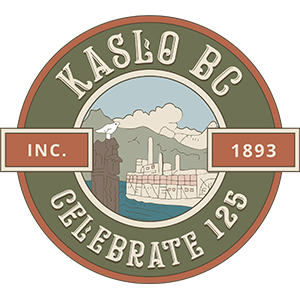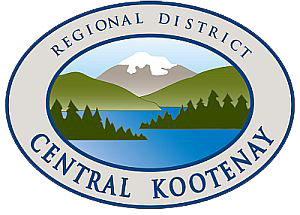History
Kaslo Now & Then
A brief history of Kaslo
Information and photos courtesy of the Kootenay Lake Archives.
Time immemorial
Long before a settlement was established on the alluvial fan of the Kaslo River on Kootenay Lake, the Ktunaxa and Sinixt people used the sheltered Kaslo Bay for camping while drying fish and making tools.
Founding of the town
George Kane was asked to find a mill site on Kootenay Lake. He found two sites for a mill, what is now Kaslo and one at Pilot Bay. The company chose Pilot Bay and George Kane went to Victoria to pre-empt the other site and form the Kaslo-Kootenay Land Co. to sell lots on the property. His brother David built a log cabin and became the first resident.
Mining boom and Kaslo becomes a City
In September 1891 the staking of two mining claims in the mountains west of the site with the promise of silver, lead and zinc sparked a keen interest in the area bringing prospectors, outfitters, businessmen and a mining boom was born in the Slocan mining district.
The town grew rapidly and soon the businessmen had enough faith in its future to apply for a charter to establish the first city in the Kootenay region. This was granted on 14th August 1893 and Kaslo elected Robert F. Green as its first mayor. The first years of the City of Kaslo were challenging. Silver prices plummeted following the repeal of the Silver Purchase Act in the U.S. in 1893 and the population started to diminish.
1894 – a year of disasters
A fire in February destroyed part of the business district on Front Street; in June the lower part of the town was washed away in floods, a hurricane wind and flooding of the Kaslo River. The people of Kaslo were resolute and by November 1895 the town had been rebuilt and the Kaslo & Slocan Railway, a narrow gauge railway, was running to Sandon to serve the mines of the area. These mines were bringing out high-quality ore which was transported by train and sternwheeler for smelting.
1897 and 1898 were boom years with two newspapers and a population of about 3,000.
The SS Moyie is built
In 1898 the CPR built the SS Moyie to join its fleet of sternwheelers and serve the newly completed Crow’s Nest railway link which brought passengers and supplies from eastern Canada to Kootenay Lake and Nelson.
Three sternwheelers were also built at the Mirror Lake shipyards for the Kootenay Railway and Navigation Co.
Logging and fruit ranching
A number of mines continued steady production, but logging was expanding as an industry and fruit ranching was developing. Kaslo became famous for its cherries and apples, which won prizes at fairs in London, England and Chicago. Kaslo’s first fruit fair was held in 1906 and a Cherry Fair in 1912. Unfortunately the cherry orchards were later devastated by the Little Cherry Disease, a virus which prevented the fruit from maturing so cherry trees were cut down and replaced with apple and pear trees.
World War I
The war saw many Kaslo boys and men joining the 54th Kootenay Battalion. They fought in Ypres, the Somme and Vimy Ridge where Lt. Col. AHG Kemball of Shutty Bench (near Kaslo) was killed. Many Kaslo women contributed to Red Cross activities.
Depression years and World War II
The depression years of the ’30s brought high unemployment and by the 1940s Kaslo became practically a ghost town with a population of about 500. Following Japan’s bombing of Pearl Harbour, 1200 Japanese Canadians were expelled from the BC coast and were interned in Kaslo from 1942 to 1945. They were housed in old and derelict buildings and houses, many of which had been built in the 1890s.
Kaslo becomes a village and the Langham is restored
In January 1959, Kaslo relinquished its city status and became a village. In the ’60s and early ’70s, there was an influx of young people from eastern Canada as well as draft dodgers from the U.S. and & ‘back to the land’ people.. In 1974 the old ‘Langham’ – an 1890s rooming house – was derelict and threatened with demolition. However a group of young people many of whom were artists, artisans and musicians, enthusiastically raised funds to buy the building and to restore it as an arts and culture centre. The building has since won awards for its restoration and is a centre of the vibrant arts and cultural activity in the village.
Downtown revitalisation
By the ’80s there was interest in reviving more of the buildings on Front Street and Kaslo took part in a Downtown Revitalisation Project with the aim of protecting the character and integrity of the area and preserving its Victorian historical, artistic, and architectural features. The Village contains two National Historic Sites – SS Moyie which was sold by the CPR to the Village when it terminated its service in 1957 and the City Hall which was built in 1898.
The economy is now based on forestry, tourism and home-based business. The Village continues to attract residents looking for the small town lifestyle in the midst of a natural environment.





